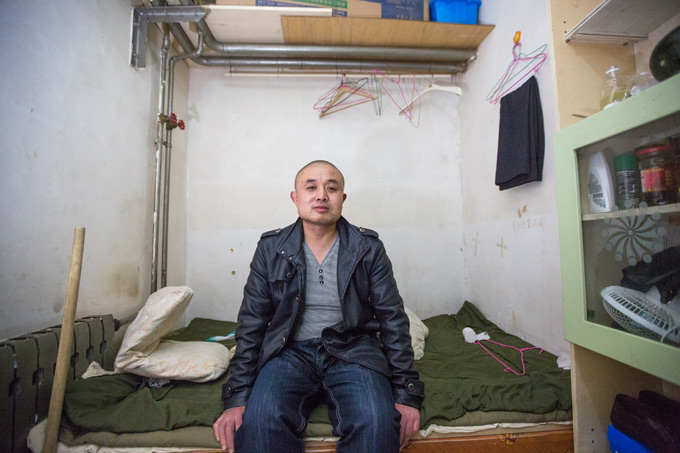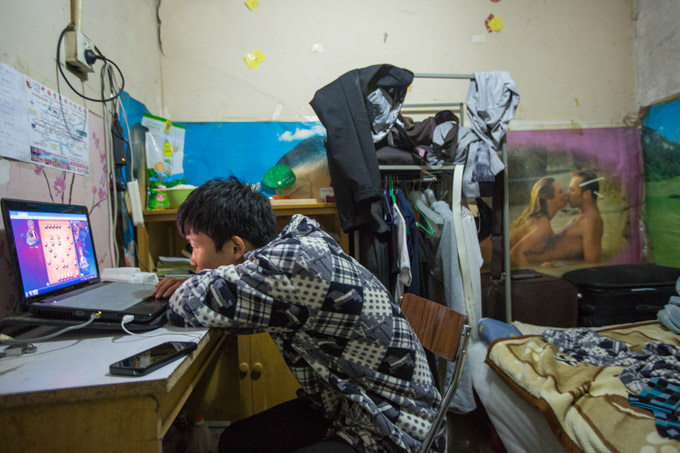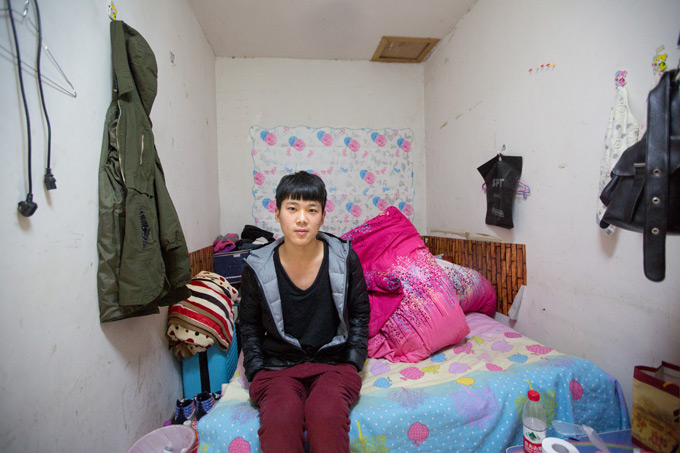Sim Chi Yin, The Rat Tribe, 2014. Video edited by Jian Yi.
Underneath the crowded streets of Beijing, a cultural capital with 23 million residents, there lies another city. This underground metropolis is home to a million or more migrant workers, who pay cheap rents to live in former bomb shelters built in 1969, during Maoist China’s border conflict with the Soviet Union. Because they dwell in the cramped, labyrinthine quarters below officially sanctioned residences, these migrants are known as “the rat tribe.” Yet they are also people with big dreams—to be actors, writers, artists.
This video, made in collaboration with Al Jazeera America, is the result of a five-year survey of underground housing by the photographer Sim Chi Yin, who made portraits of more than 100 basement dwellers. It focuses on one young resident of Beijing’s underground city, Zhang Xi, who came from Inner Mongolia to the capital seeking acting jobs and a chance to live affordably in the big city.

Zhang Zhanguo, 34, works in the kitchen of a Chinese fast-food restaurant in west Beijing and lives two floors below ground in a private apartment. He earns 3,000 yuan a month and sends about half of it to his ex-wife, for his 8-year-old daughter. He used to earn quite a bit more harvesting cotton, apples and pears in the province of Shanxi. But he says, with a grin: “I gambled it all away, so I came to Beijing to be a migrant worker because I had no other choice.” Photo by Sim Chi Yin / VII, 2014.

Erry Qing, 21, studies fashion design in Beijing, where he has lived for a year. He came from the southern province of Guangdong with a dream: “to be a boss of [his] own clothing store.” Photo by Sim Chi Yin / VII, 2014.

Su Fuzhou, 19, works in the kitchen of a 24-hour restaurant in Beijing Southern Railway station. She traveled from her home city of Anyang to Beijing for work four months ago, and has shared a basement room with her girlfriend for the past month. Photo by Sim Chi Yin / VII, 2014.
Reporting for this story was supported, in part, by the Pulitzer Center for Crisis Reporting. Additional research and reporting by Ian Johnson.

